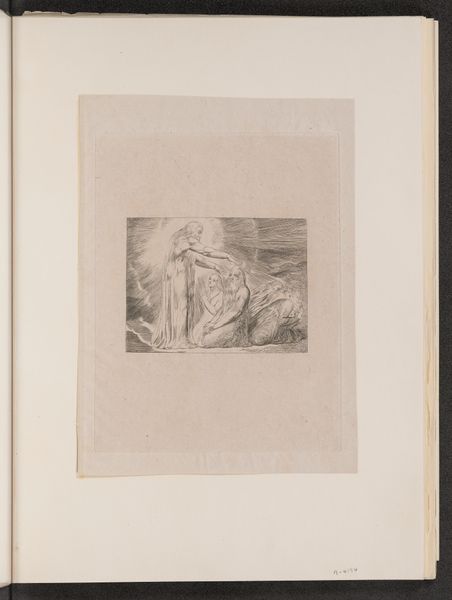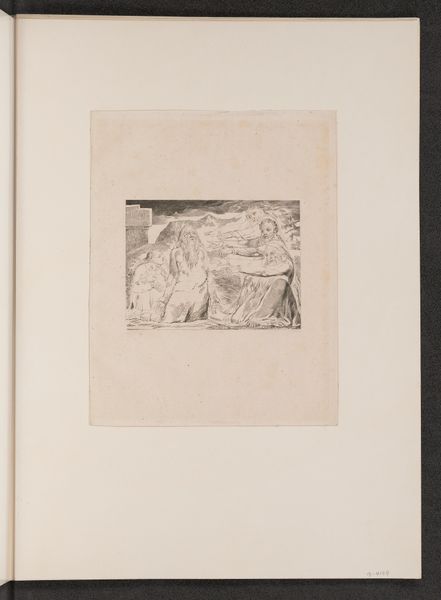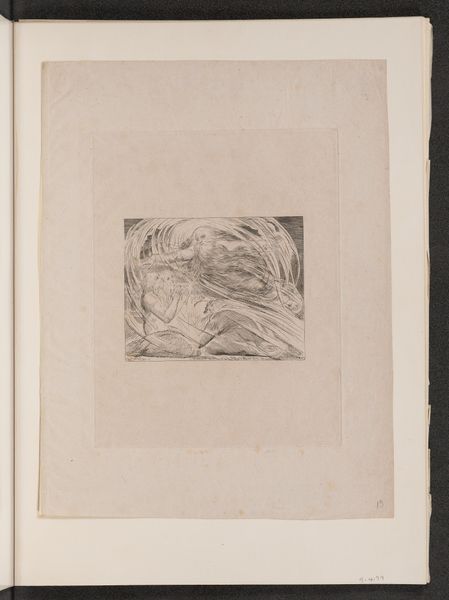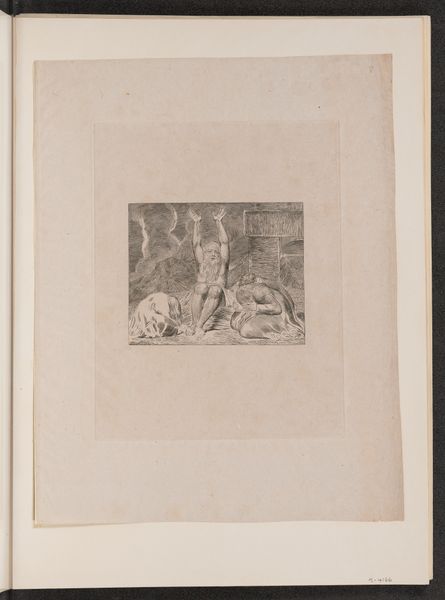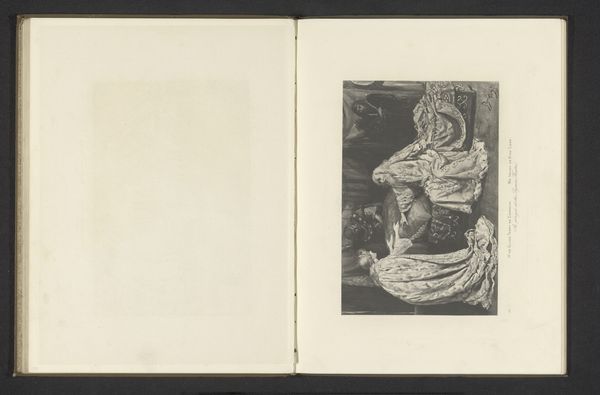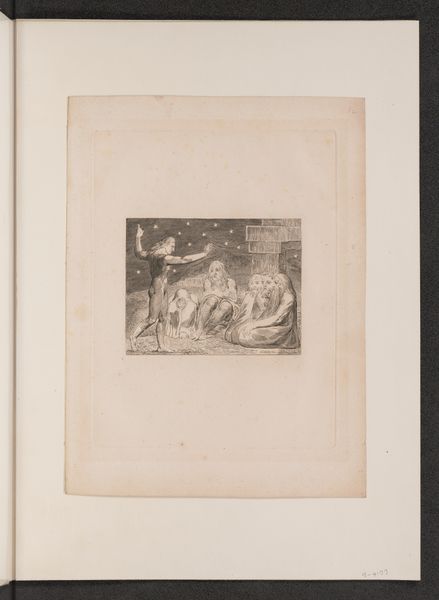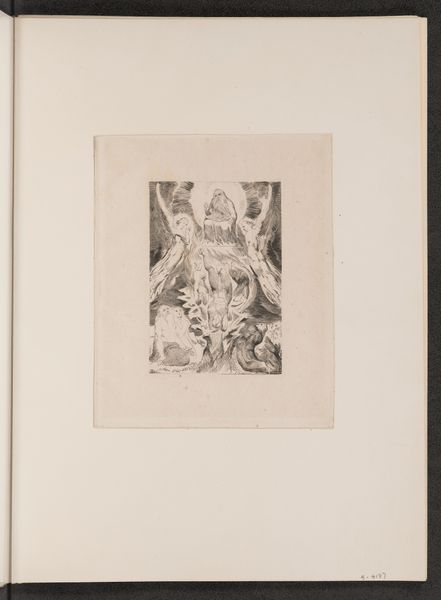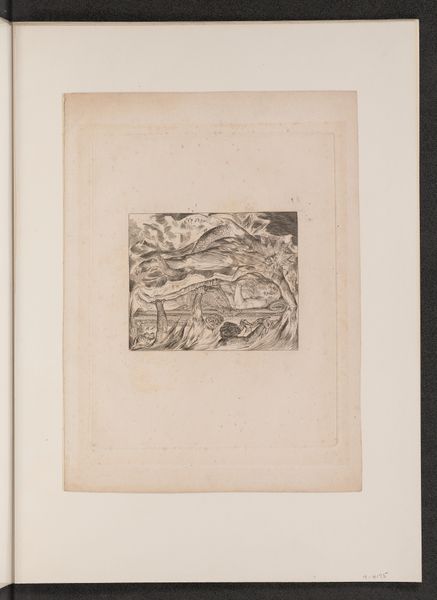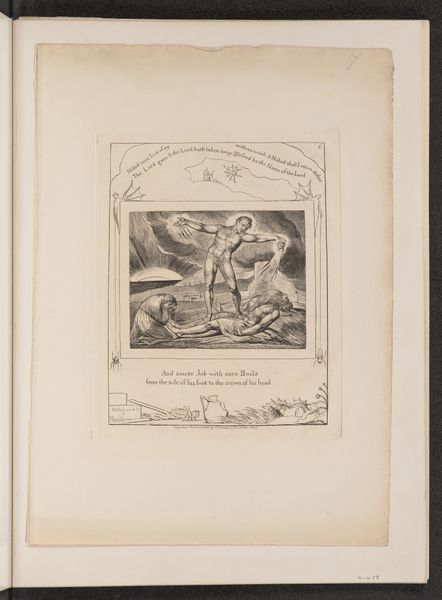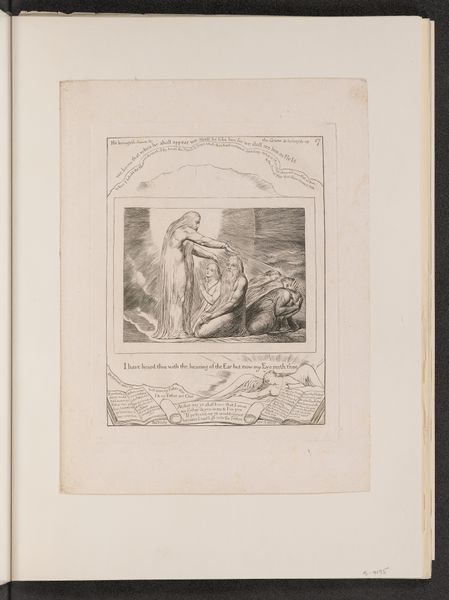
print, paper, engraving
#
allegory
# print
#
figuration
#
paper
#
romanticism
#
history-painting
#
engraving
Copyright: National Gallery of Art: CC0 1.0
Editor: This is William Blake's engraving "Satan Smiting Job with Boils" from 1825. The stark contrast and anguished figures create such a powerful sense of suffering. How do you interpret this work within its historical and social context? Curator: This print is rife with symbolism that really speaks to its historical moment. Blake lived during a period of immense social upheaval and industrial change, right? Considering that, what could these images of suffering, and Satan’s implied authority, tell us about the perceived power structures of the time? Editor: I hadn't considered the Industrial Revolution's impact directly. The way Satan looms over Job and his family definitely suggests a critique of oppressive forces...almost like the burgeoning capitalist system? Curator: Precisely. And remember, Blake was deeply critical of institutional power, especially the Church and the State. Think about how the figure of Satan is traditionally viewed, then consider Blake’s positioning of him here. Is he a purely evil force, or something more complex, perhaps a symbol of revolutionary potential turned destructive? Editor: That’s a really interesting point. Maybe Blake is illustrating the dangers of unchecked power, regardless of its source, whether divine, political, or even revolutionary? Curator: Exactly. Now consider Job's nakedness, the boils covering his body, the despair of his family… How might this visual language relate to contemporary understandings of vulnerability and societal abandonment? Editor: The vulnerability is palpable; the image really humanizes suffering and almost accuses the powerful who inflict or ignore it. It reframes how we consider the least among us. Curator: Right. It compels us to critically examine the narratives that perpetuate suffering and to actively engage with our responsibility in dismantling oppressive structures. What do you take away from the piece after this new contextual awareness? Editor: Understanding Blake's radical stance definitely adds a new layer of meaning, highlighting not just the suffering but the active, almost rebellious stance against systemic injustices. Curator: Precisely. This piece demands we confront uncomfortable truths about power, vulnerability, and the ever-present potential for revolution and destruction.
Comments
No comments
Be the first to comment and join the conversation on the ultimate creative platform.
